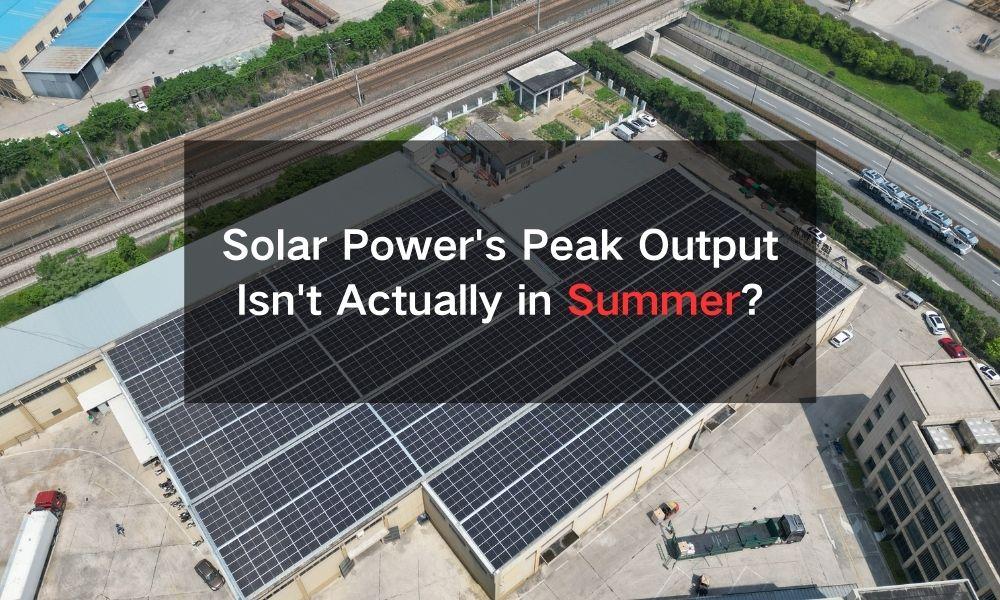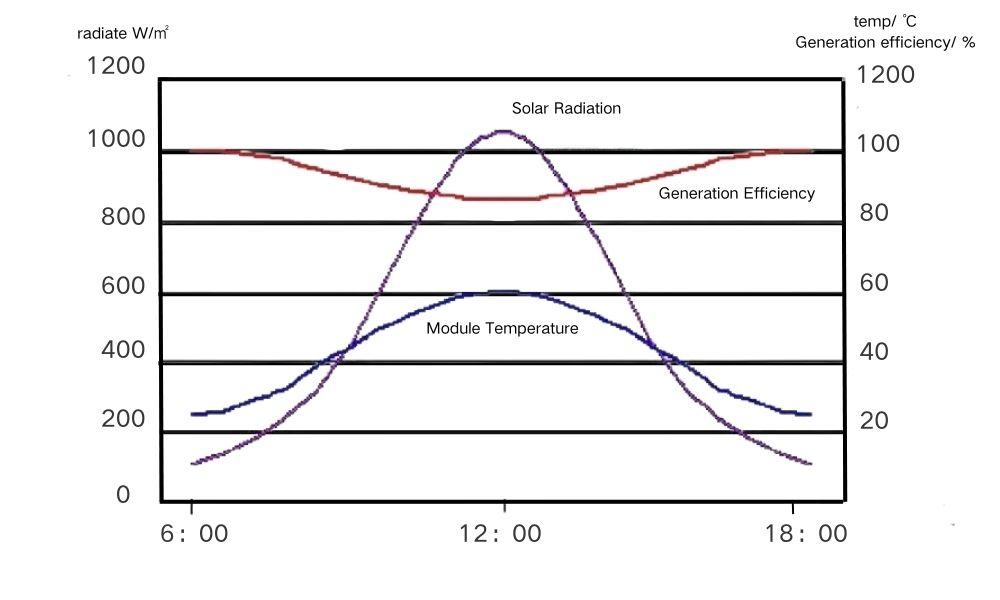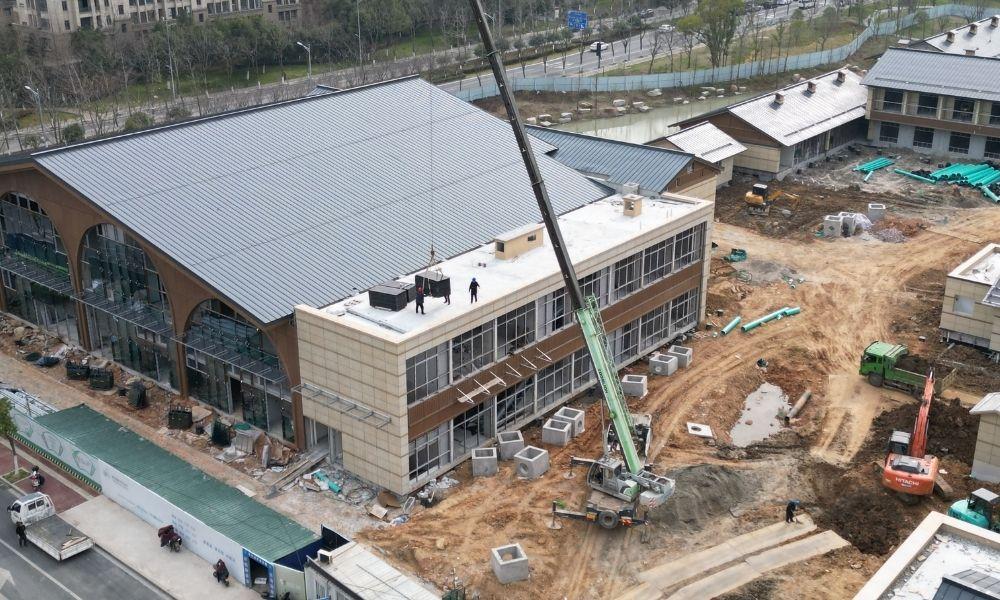Solar Power's Peak Output Isn't Actually in Summer?
Why Not the Highest in Summer?

The standard operating temperature of the cell is 25℃ when the solar panel is working normally. Under the working conditions of greater than 25℃, the output power of the module will cause a corresponding attenuation for every degree of temperature increase, at which time the power generation of the solar panel is affected by the temperature coefficient of the solar panel.
Under normal circumstances, for every 1 ℃, the N-type monocrystalline module's output power is reduced by 0.38% of the reference value, and the P-type module's output power is reduced by 0.42% of the reference value. Researchers for the impact of temperature on power generation performance to do the relevant tests. The data show that the temperature change range of -3.15 ~ 66.85 ℃, monocrystalline silicon solar cells and amorphous silicon solar cells conversion efficiency temperature change rate of -0.176% % / ℃ and -0.08% / ℃, respectively.

It can be seen that high temperature does not equal high power generation. On the contrary, high temperature has many unfavorable effects, for example, high temperature will lead to increased resistance of the connecting wires, increased loss, and so on, and all these reasons will lead to lower power generation efficiency. High temperature will affect the operating environment of the inverter electronic components, if the working environment temperature is too high inverter will even start the protection function, or even stop working.
Consequently, summer's high temperatures negatively impact both module and inverter efficiency, leading to increased failure rates and overall decreased energy production. Therefore, it is not the peak season for power generation.
Autumn: The Secret Peak Season for Solar Power?
As temperatures become more comfortable in autumn with fewer rainy days, PV power output often reaches its highest levels.
During this season, the temperature typically hovers around the optimal 25°C for solar panels, allowing them to efficiently absorb and convert solar energy. Additionally, with thinner cloud cover and high solar radiation intensity, solar panels can receive more sunlight, providing ample "raw material" for power generation. Autumn also sees stable electricity demand, facilitating the integration and dispatch of PV power. These factors collectively make autumn the season with the highest PV power output.

How does Climate Affect Power Generation?
Promoting Factors
Solar Radiation Intensity: Clear autumn days yield higher solar radiation, directly enhancing power generation. For instance, the El Niño phenomenon can boost PV production in regions like South America.
Stable Weather Conditions: Moderate autumn winds reduce the risk of solar panels vibration, and mild temperatures decrease thermal losses, extending equipment lifespan.
Constraints and Challenges
Extreme Weather Events: Hailstorms in autumn (e.g., in southern China and the U.S. Midwest) can severely damage modules, with 54% of global PV insurance claims related to hail.
Strong Winds and Heavy Snow: Typhoons and blizzards can deform mounting structures or cover panels with snow, impacting energy stability.
Environmental Pollutants: Fallen leaves in northern regions and smog or dust in southern areas can reduce light absorption, necessitating regular cleaning and maintenance.
Regional Climate Variations: Snow accumulation in high-latitude areas requires specially designed mounts, while coastal regions must guard against typhoon impacts and salt corrosion.
The golden season for photovoltaic power generation is closely linked to climatic conditions. Rationally addressing weather challenges, embracing technological innovations, and implementing refined operations are key to enhancing profitability!